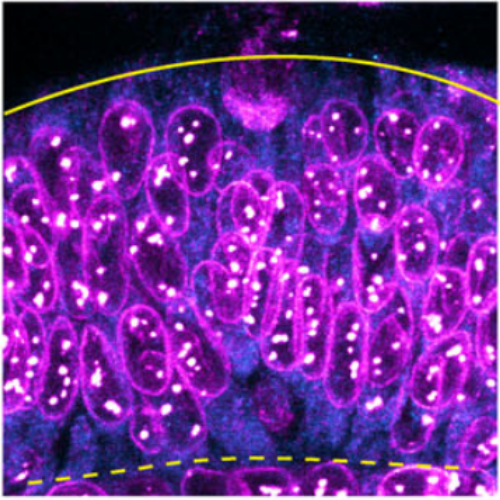Cell and tissue morphology determine actin-dependent nuclear migration mechanisms in neuroepithelia.
Correct nuclear position is crucial for cellular function and tissue development. Depending on cell context, however, the cytoskeletal elements responsible for nuclear positioning vary. While these cytoskeletal mechanisms have been intensely studied in single cells, how nuclear positioning is linked to tissue morphology is less clear. Here, we compare apical nuclear positioning in zebrafish neuroepithelia. We find that kinetics and actin-dependent mechanisms of nuclear positioning vary in tissues of different morphology. In straight neuroepithelia, nuclear positioning is controlled by Rho-ROCK-dependent myosin contractility. In contrast, in basally constricted neuroepithelia, a novel formin-dependent pushing mechanism is found for which we propose a proof-of-principle force generation theory. Overall, our data suggest that correct nuclear positioning is ensured by the adaptability of the cytoskeleton to cell and tissue shape. This in turn leads to robust epithelial maturation across geometries. The conclusion that different nuclear positioning mechanisms are favored in tissues of different morphology highlights the importance of developmental context for the execution of intracellular processes.

- J Cell Biol. 2019 Oct 7;218(10):3272-3289
- 2019
- Cell Biology
- 31420451
- PubMed
Enabled by:
